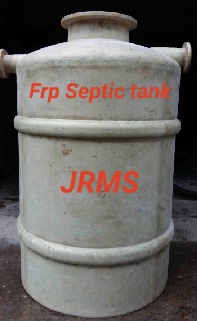
Posted On: 18th November, 2019
As it comes to manufacturing tanks, there are so many options available in the market. Materials like concrete, steel and polyethylene can be used for the purposes. However, fibreglass or fibreglass reinforced panel (FRP) is a more preferred option to the leading FRP tank manufacturer Kolkata. Let’s compare the differences between the materials commonly used for tank manufacturing.
Concrete has been used for manufacturing storage tanks for years. they are used for producing both underground and above-ground tanks. However, the material has certain limitations.
• Concrete tanks are obtainable in factory-precast models only. they are good, if you are looking for any capacity greater than 4000 gallon. They are formed in the field instead of factory-controlled manufacturing units. On the other hand, fibreglass tanks are built in the factories.
They can be installed in less time while saving your money.
• Concrete is heavy. Thus it is difficult to ship, handle and install such tanks at the job sites. They often add to the installation costs. However, fibreglass tanks are lightweight and easily installable.
• Concrete tanks are subject to corrosive attacks. They need a costly liner solution to protect the tank against corrosion. Cracks in the concrete tanks may expose the steel reinforcement and cause corrosion. This often compromises the structure. This doesn’t take place with fibrelgass tanks.
• Concrete is a strong material. But the flat-tank top designs of the buried concrete tanks are for perfect for traffic load condition. They require a design upgrade and that can add to the expenses. However, this issue is not there with FRP tanks.
• Concrete tanks are prone to leakages and cracks. Water tanks in the fire protection system should have a waterlight design. And, this ensures that the water supply will be obtainable while needed as confirmed by a topnotch FRP tank manufacturer Kolkata.
Like concrete, steel is also a common material to be used for constructing underground and above-ground tanks for many years. However, steel features some drawbacks while used for making water storage tanks.
• FRP doesn’t rust, but steel rusts. Steel is prone to corrosion, unlike fibreglass. For underground storage tanks, corrosion is one of the major concerns. And to alleviate the issue, steel storage tanks are often coated or lined and that adds to the expenses. Also, it poses a long-term maintenance issues.
• Weight is another major disadvantage of steel tanks while compared to FRP tanks. Steel weighs much more than that of FRP. And thus, installation of steel tanks is more expensive than installation of a fibreglass tank.
Though polyethylene is not much used for manufacturing storage tanks, the material has a better corrosion resistance capacity than steel and concrete. However, it has other limitations while compared to FRP.
• As it comes to underground poly tanks, there are certain installation conditions that are not applicable to fibreglass tanks.
• Poly tanks are limited in capacity. However, this issue is not applicable to FRP tanks.
So, it is evident that FRP is a preferred material for manufacturing storage tanks. Unlike steel and concrete, they don’t corrode or rust. The tanks are lightweight and thus easy to install. This saves you money as well.